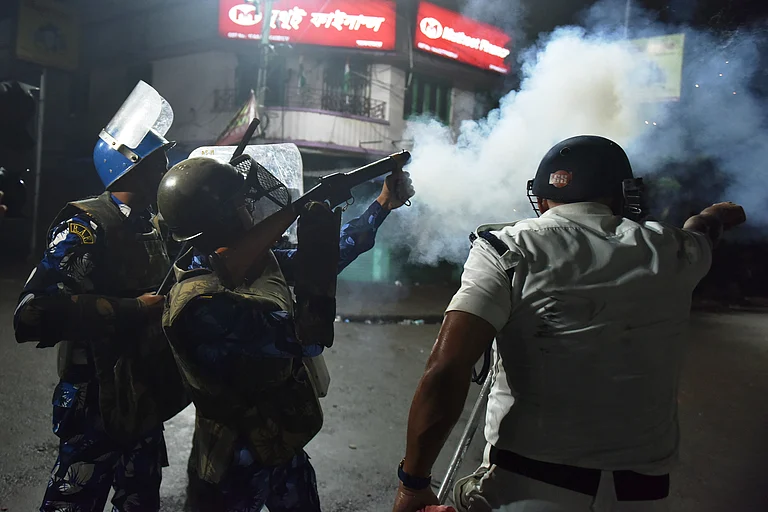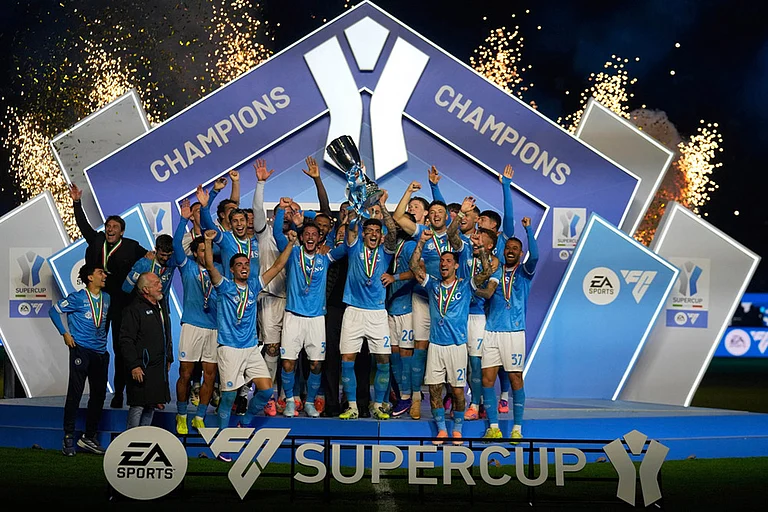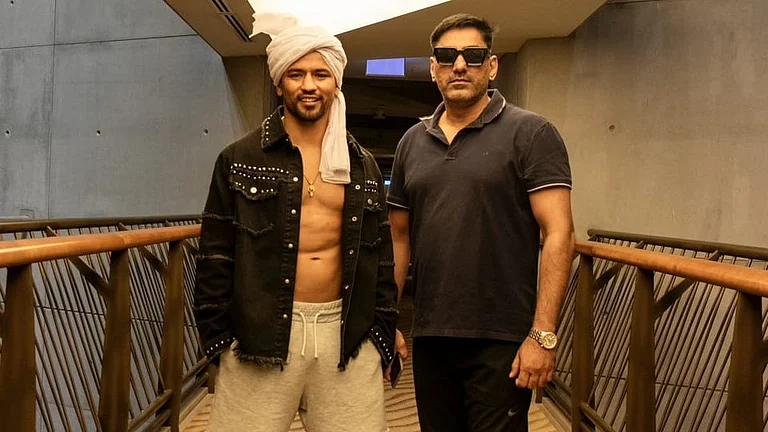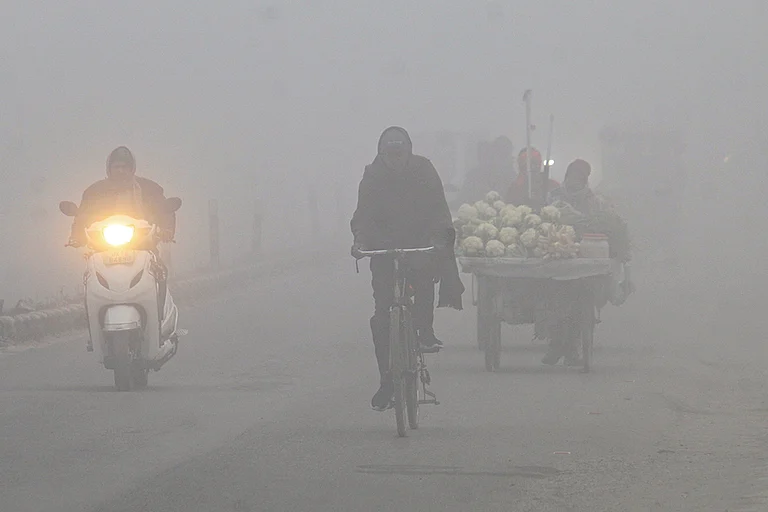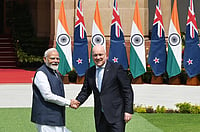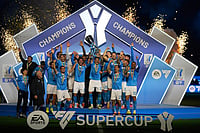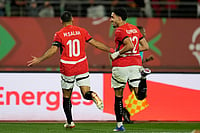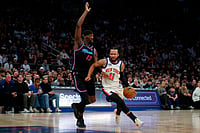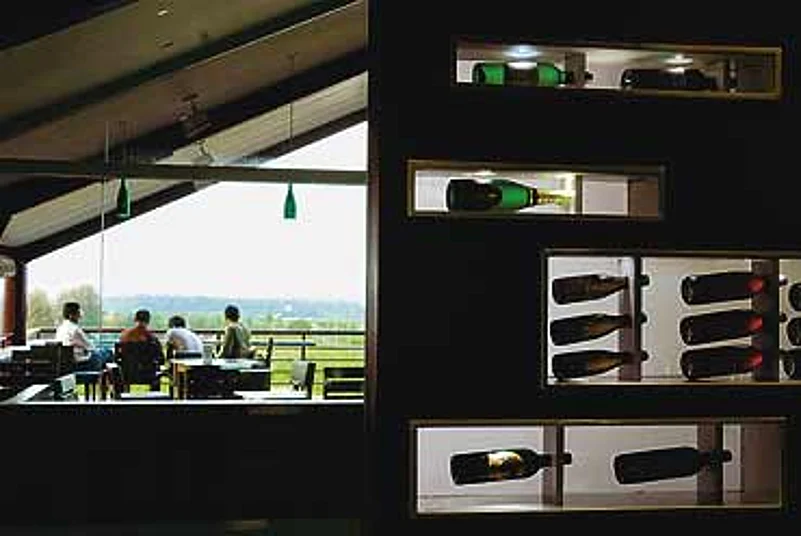
Thirsty already, the backpackers head to Sula's wine bar, overlooking the sweeping vineyards and the blue expanse of the Gangapur dam beyond. Bottles of Brut are popped to welcome the weary; and glasses of bubbly are quickly followed up with Blush Zinfandel, Chenin Blanc and Cabernet Sauvignon. By the time Sula's Estonian staffer, Mari, takes us on the wine tour, we're all buzzing like bees.
We walk gingerly round the vermiculture patch where tangled masses of earthworms turn discarded grape-pulp into manure; then thread our way through orderly rows of grape-vines, past tight, black clusters of Cabernet Sauvignon and heavy bunches of Chenin hanging drunkenly in the late-afternoon sun. The air has the heady fragrance of fermenting grapes begging to be picked. Mari plucks some for us and we taste as we go, startled by the unrestrained sweetness of the Chenin and the crunchy seeds hidden within the Cabernet.
This is the year's busiest time for chief winemaker Ajoy Shaw. He must tour every inch of these vineyards, tasting the grapes and finding the perfect moment to pick them. Wait too long and they rot; make haste and they won't be sweet enough. How does a bloke with a master's degree in biotechnology and very little prior wine-drinking experience become a master winemaker? On-the-job experience—Shaw has been through nine harvests now, including two in California and one in Bordeaux.
"Taste as much as you can, both good and bad, then decide for yourself," he advises, cutting past the snobbery that often turns wine-drinking into an intimidating experience, and defending every drinker's right to trust his own taste.
Onward to the winery, where the floor is sticky with the remains of the day. Here, grapes are crushed dry of every drop of juice by machine, then fermented using yeast, till the sugar slowly turns to alcohol.
At nightfall, Mari leads us through a tasting session. We learn swilling without spilling (well, almost); unabashedly thrust our noses into glasses; and venture descriptions like 'grassy' or 'gooseberry-ish' with a straight face. Some backbenchers are laughing, too hard to take it all seriously. Which is great because wine-drinking is being stripped of its pretensions by a bunch of backpackers who have the most important thing about wine-drinking on their minds: having fun, gooseberries et al be damned.
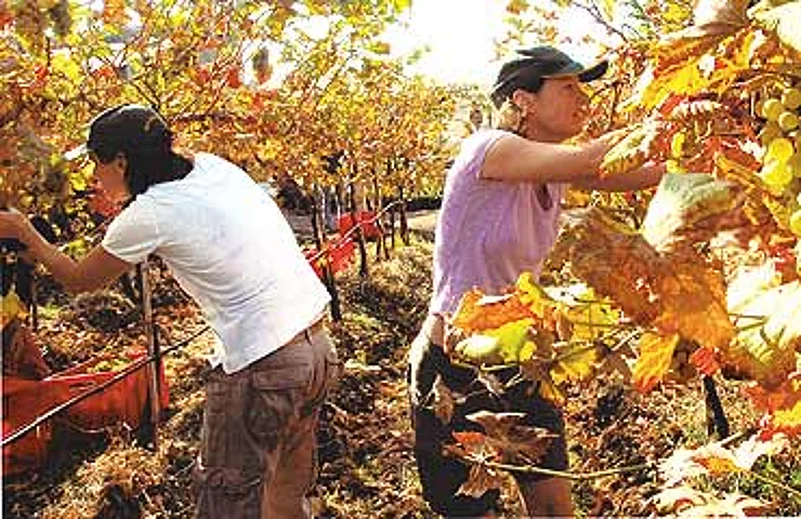
After Sangria-sipping around a bonfire, the campers shiver through the night, agreeing by morning that not everything about the outdoors is lovable. Truth be told, this is only their first weekend in partnership, and both Sula and the Mocha backpackers need to learn as they go. The bathrooms organised by Sula are too far from the campsite and the small-town food is hardly gourmet. Some of the backpackers learn that a chatai is not the same as a sleeping bag; and that a night of camping does not always have a happy ending of a hot shower.
But there's nothing like a bit of healthy competition to energise Sunday morning. The campers have a grape-picking race, armed with shears. The winning team gathers 175 kilos of grapes; and the losers mutter something about how bottles of Sula Brut are scarcely reward enough for free labour. A case of sour grapes, perhaps?
Then we all hitch up our pants and climb into a wooden vat for some good ol' fashioned grape-crushing. Traditionally, in Europe, this was reserved for the virgins of the village—and although not one of us can possibly stake claims to chastity, our happy feet are made happier by the pulp-and-seed massage.
Later, our feet glow. Perhaps this is what vino therapy feels like—Sula plans to set up a wine spa where all those anti-oxidants can be put to good use. Plans also include a boutique hotel, and an amphitheatre for cultural weekends on the spot where our tents stand.
Sula isn't the only one exploring the immense potential of wine tourism. Market leader Chateau Indage will open two wine spas this year in Narayangaon and Nashik, offering everything from wine tours and wine meals to Merlot massages or Champagne showers.
"Once you see the wine being made in these surroundings, it gets into your blood," says Vickrant Chougule, strategy head, Chateau Indage. "You understand more this way than through any amount of wine you've drunk all your life."
Which explains, in part, why Sula's tasting room is bursting-to-full over the weekend: conference delegates on their way home; pilgrims after a pious day in nearby Shirdi; Nashik locals wanting entertainment; teetotallers looking for a gifting option; and foreigners from all over the world who've come to see what Indian wine is all about.
The turnout is encouraging enough to suggest a very real demand for wine tourism. But for the 22-odd wineries in the Nashik region, struggling to make good wine, it is—apart from wine-tastings—a mixed blessing. Even for Sula—it crossed the annual sales mark of 1.5 million bottles last year—rising land prices make for a constant toss-up between growing more grapes and building for tourists. But this is value-addition of sorts. "We're giving people an experience, making them customers for life," says Samant.
It's a small beginning, this group of backpackers and six tents. But small beginnings go a long way as anyone who has seen a cluster of grapes turned to wine will tell you.







